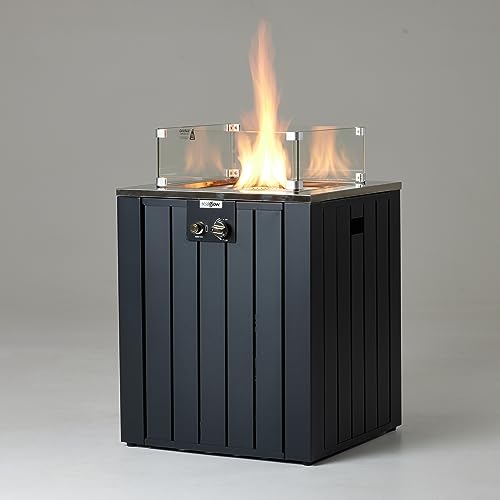10 Life Lessons We Can Learn From Garden Heating Solutions
Garden Heating Solutions: Enhancing Outdoor Spaces Year-Round
As seasonal modifications bring varying temperatures, garden enthusiasts face the obstacle of keeping their valued outdoor spaces. Whether for cultivating plants, amusing visitors, or merely taking pleasure in the fresh air, garden heating solutions are crucial to optimizing satisfaction and performance. This article explores numerous options readily available for heating gardens, consisting of traditional and modern solutions, their benefits, and useful tips for execution.
Comprehending the Need for Garden Heating
A well-maintained garden ought to be a year-round sanctuary, providing respite in both summertime and winter season. The requirement for garden heating develops from:
- Frost Protection: Certain plants, specifically tender varieties, require protection from frost to make it through cooler months.
- Extended Growing Seasons: Heating solutions can enable earlier planting in spring and later collecting in fall.
- Comfort Optimization: Outdoor gatherings and activities can occur more easily with regulated temperatures.
Types of Garden Heating Solutions
Garden heating solutions can be divided into several categories based upon their technology and fuel source. Here's an in-depth look at some popular options:
1. Electric Heaters
Electric heaters are a flexible option for smaller gardens and patios. They are simple to install and operate, using instantaneous heat with very little effort.
- Types of Electric Heaters:
- Patio Heaters: Freestanding systems with a heating component that radiates warmth.
- Wall-mounted Heaters: Ideal for little spaces; these heaters conserve ground space while offering warmth.
- Portable Electric Fans: Great for targeted heating in particular locations.
2. Gas Heaters
Gas patio heaters are a standard option for outdoor heating and are extensively appreciated for their effectiveness and aesthetic charm.
- Kinds Of Gas Heaters:
- Propane Heaters: Easy to carry and set up, appropriate for a lot of outdoor settings.
- Gas Heaters: Permanent components, suitable for locations with existing gas lines.
3. Wood-burning Solutions
For a rustic touch, wood-burning solutions such as fire pits and chimineas include heat and ambiance to gardens.
- Pros and Cons of Wood-burning Heating:
- Advantages: Aesthetic appeal, social environment, and reliable heat circulation.
- Drawbacks: Requires more maintenance, management of ashes, and possible fire risks.
4. Infrared Heaters
Infrared heaters utilize infrared radiation to straight warm things, making them energy-efficient and ideal for outdoor areas.
- Benefits: Immediate heat, very little energy loss, and viability for all weather.
5. Outdoor Heating Mats and Blankets
For smaller sized patio areas or specific zones in a garden, heating mats and blankets can be an ingenious solution to provide an additional layer of heat.
Considerations for Choosing a Heating Solution
When choosing the best heating service for a garden, several factors need to be examined:
- Garden Size: Larger spaces might require numerous heating sources for efficient heat.
- Budget: Various options exist at various cost points. Cost-effectiveness can figure out the picked approach.
- Safety: Evaluate the safety features of the heating options, particularly when utilizing gas or wood-burning solutions.
- Visual Appeal: Integration with garden style can boost overall visual satisfaction.
Table 1: Comparison of Garden Heating Solutions
Type
Installation
Fuel Source
Efficiency
Expense
Electric Heater
Easy
Electrical energy
Rapid/Immediate
Moderate
Gas Heater
Moderate
Propane/Natural
High/Effective
Moderate to High
Wood-burning Option
Moderate/Hard
Wood
Effective
Low to Moderate
Infrared Heater
Easy
Electrical power
Immediate
Moderate to High
Heating Mats/Blankets
Easy
Electrical power
Targeted
Low to Moderate
Carrying Out Garden Heating Solutions
To ensure efficient heating in outdoor settings, a strategic method is needed. Here are some useful tips:
- Evaluate the Layout: Consider the garden design to recognize areas where heating is most required.
- Choose Multidirectional Heaters: This will help disperse heat more equally throughout the space.
- Enhance Insulation: Utilize windbreaks (like garden walls) or heat-retaining products around the heating setup.
- Include Decor: Attractive designs of heating units can enhance the garden's ambiance while supplying heat.
- Routine Maintenance: Ensure that heaters (specifically gas and wood-burning) are preserved for optimal efficiency and security.
FAQs About Garden Heating Solutions
1. How safe are electrical heaters for outdoor use?
Electric heaters developed for outdoor usage are normally safe when installed properly. Always follow Patio Heating and safety guidelines to mitigate dangers.
2. Can I leave my gas heater outside throughout winter?
While lots of gas heaters are developed for endurance outdoors, it's a good idea to cover them or store them inside your home to protect them from harsh climate condition.
3. Are there energy-efficient options for heating my garden?
Yes! Infrared heaters and heating mats are particularly energy-efficient as they focus heating in particular areas rather than warming the surrounding air.
4. What are the finest plants to grow in a heated up garden?
Popular choices consist of tomatoes, herbs, peppers, and other tender plants that prosper in temperature levels above 50 ° F (10 ° C).
Garden heating solutions profoundly improve outdoor areas, permitting year-round pleasure and enhanced plant growth. By comprehending the numerous kinds of heating options available and making informed choices based upon individual preferences and specific garden conditions, garden enthusiasts can change their outdoor locations into comfortable retreats, regardless of the season.
